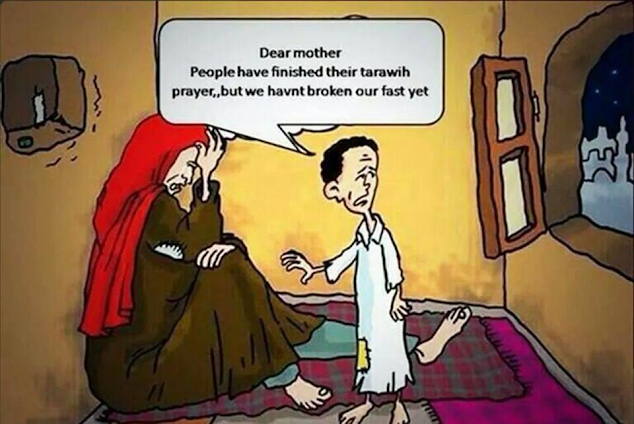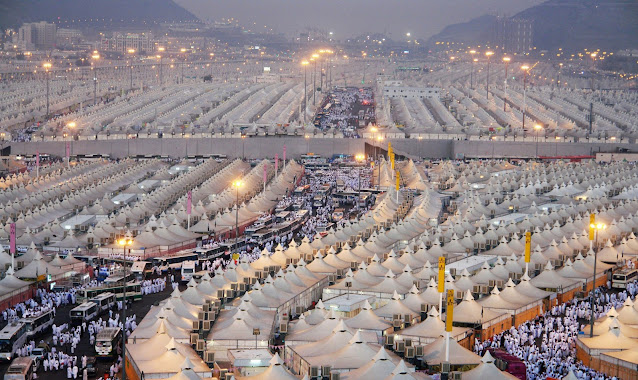The Moon Sightings of the Hijra Lunar Months.
We have now come to addressing the current lunar calendar controversy. We should be able to realize by now, that the Hijra calendar no longer useful for determining the time of the year simply because it no longer signify the time or season of the year. The length of the earth's orbit around the sun, which takes 365 days to complete, determines the period of a year that is characterised by seasonal cycles. The Hijra calendar is currently lunar-based and not intercalated to keep the months in the seasons they were named after.
As a result, the month of Rabiul Awal which was named to signify the arrival of the First Spring season, no longer falls in the Spring season.
The Hijra calendar had become arbitrary with no fixed or observable point of annual cycle. The calendar is just a 12 lunar months lunation cycle, instead of a year defined in observable conditions. We can almost say it was based on a random point in time and that random point was the Hijra event, selected over other event such as the birthdate of Muhammad. In essence, the Hijra calendar was clearly devised by men.
The question now is: Does God have to follow this calendar devised by men to determine when to send blessings or barakah on a particular day or month in the calendar?
Left : An almanac by Hamdi Mustafa bin Sunbul describes the effects of the signs of the zodiac according to the different seasons. Topkapi Palace Museum Library,
Astronomical Data vs Sunnah.
40 year data from year 2001 to 2041
https://www.timeanddate.com/moon/phases/
Despite having access to future astronomical data and events, religious authorities insisted to continue with archaic methods of observation, causing continuous divisions and confusions among the Islamic nations and communities. This is unfortunate despite the fact that Muslims at the beginning of the era were the most advance nation in sciences and knowledge, especially in the subject of Astronomy. Clerics preferred to revert to earlier methods of observing the moon, which was usually without difficulty in the clear skies of the Arabian desert. But as Islam expanded to other continents, this method was put in practice for the sake of implementing the prophet’s Sunnah. This unfortunately had caused further discrepancies and contradicting results from one place to another, although the knowledge and method of astronomical calculations had been developed during the Abbasid period between the 8th and 13thCentury.
Al-Biruni diagrammatic explanation of the phases of the moon
Religious clerics bi-annual ritual of moon sighting. Although the exact position of the moon can be scientifically determined, some clerics still insist on the outcome of the visual confirmation that may be hampered by bad local weather or thick clouds.
It is unclear why clerics had been reluctant to embrace scientific solutions towards a standardized and rationalized calendar. Their religious knowledge had been their domain and this is where clerics wish to remain in control so that they are able to apply the practice of the prophet for the moon sighting. Perhaps the availability of scientific information had instilled fear of abandoning the sunnah over a rationalized system. In this way, the clerics were able maintain their relevance in decisions or decree to determine the date of religious days.
Astronomical data had been available for decades in the past and also for decades into the future. A standardized calendar could have been developed for the Muslim world in order to make it more practical. Every year Muslims had to wait at the moon sighting evening to decide whether Eid will fall on the next day so that they can prepare the necessary celebration that same night.
It is not difficult for any conscious person to realized the fallacy of the Hijra calendar, especially those conscious of Allah. But this is the problem with any religious followers. One might be of scientific background, but when it comes to religion, their scientific minds simply switched off when in the hands of religious scholars, as if science and religion doesn’t mix.
The results of moon sighting will always be different depending on location of the sighting in relation to the timings of the new moon. Based of empirical observation, the new moon can only be visible, if during sunset, new moon had occurred for at least 12 or 13 hours ago.
The diagram above shows how the beginning of a lunar Hijra month would be determined. For example, if the new moon occurred over Kuala Lumpur, Malaysia, observers in Malaysia will still not able to observe the waxing of the moon 6 or 7 hours later during sunset.
Observers in the UK or Spain or Morocco would be able to observe the hilal, or the moon crescent during sunset, 12 or 13 hours later, provided the sky is clear or have good visibility.
The discrepancy occurs because the new moon is not in synchronization with the International Date Line (IDL) which is located in the middle of the Pacific Ocean. The new moon can happen anywhere while it is in conjunction with the earth and the sun.
Since religious authority Muslim countries still insist on local context of the new moon sighting to determine the beginning and the ending of the religious month of Ramadhan, discrepancies are bound to happen. Overseas Muslims sometimes had to depend on their home countries religious edict resulting different communities fasting or celebrating Eid on different days in the same town.
Solution to the Unsystematic Hijra Calendar
The purpose of a calendar is to standardize timings so that different parties can agree on a particular date. Imagine having an international contract dated on 1st Ramadhan between two parties when 1st Ramadhan falls on different days in the two countries. This will result in disagreement and dispute that renders the calendar as unreliable.
The solution is really simple. Since the Hijra calendar was of Arabic origin, the calendar must therefore be Arab-centric and determined by Saudi Arabia. So the moon sighting must be based on the sightings in Makkah or Madinah, the home town or birth place of Islam itself. And the rest of the islamic world simply follows.
There is no need for Muslims clerics in Indonesia, Bangladesh, Morocco or Birmingham to determine the date of an Arabic calendar. We have seen its disastrous and divisive results every year.
The Chinese calendar has already demonstrate the effectiveness of this. The Chinese New Year generally based on the arrival of Spring in China. All the Chinese around the world celebrate their Chinese New Year on the same date that usually falls between January and February. The Chinese in Melbourne do not celebrate the arrival of Spring in September. The Chinese in San Francisco do not develop their own Chinese calendar based on moon sighting in San Francisco's Ocean Beach. We do not hear the Chinese having disagreement on the date of the New Year because it was already determined by the country of origin - China.
So a country like Indonesia with the largest Muslim population in the world cannot take possession to fix the date of of an Arab calendar, that has Arabic names of the months that were based on the Arabic context. There is no Rabiul Awal in Indonesia. Camels and the month of Syawal has no relevance in Indonesia or Birmingham.
Muslim clerics do not have a full understanding of the functional purpose of a calendar, that is to standardize time. Their intention to perform the moonsighting was purely due to religious inclination, treating it as a religious ritual, and part of the Prophet's Sunnah had completely defy the original purpose of the calendar. Their desire to perform the Sunnah without any regards to the overall implication, had cause mayhem and confusion. As long as they do not realize the mistake, this confusion will repeat every year.









Comments
Post a Comment